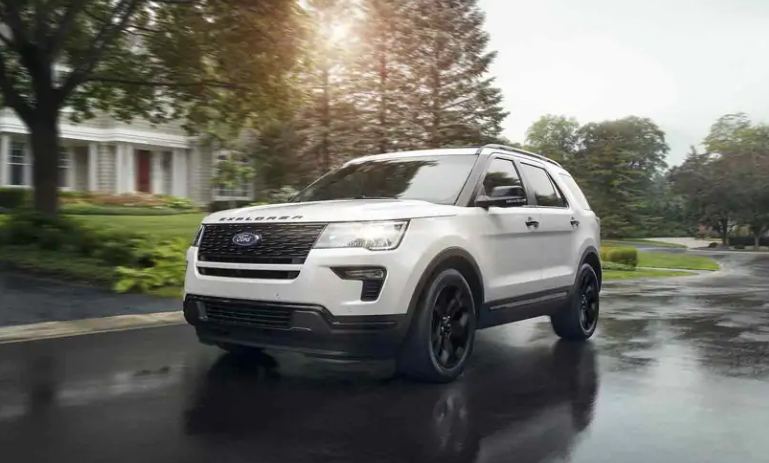Sign up for daily news updates from CleanTechnica on email. Or follow us on Google News!
New research by Possible, a UK climate advocacy group, finds that average tailpipe emissions from new internal combustion vehicles today are higher than they were ten years ago. In fact, if a person is interested in purchasing a non-electric car that has the lowest tailpipe emissions, a used car built in 2016 is probably the best choice.
The reason for this rather counterintuitive state of affairs is simple. The average new vehicle today is larger, heavier, and thirstier than the average new car in 2013. Burning more gasoline (or diesel) means more tailpipe emissions. There’s no way to sugarcoat this. As the world gets hotter, humans are doing exactly the opposite of what needs to be done to lower their personal tailpipe emissions profile. People want bigger cars and trucks. In particular, they want SUVs, which now account for half of all new vehicle sales in the US and one third of sales in the UK.
The study found the trend in the UK is most pronounced in the wealthiest neighborhoods, where the well heeled glorify in their oh so fashionable existence by driving a big, hulking Land Rover to lunch at their favorite dining club every day. Spotted duck tastes so lovely when you have a two-ton SUV waiting outside. The trend is so prevalent that those big SUVs are now referred to as “Chelsea tractors,” because they weigh close to 5,000 pounds.
According to the Possible research, the sales price of new ICE cars in the UK in 2023 correlates closely with carbon dioxide emissions — the more expensive the car, the higher its carbon emissions are likely to be. The richest one-fifth of households in England are 81% more likely to own a super heavy emitting car (226gCO2/km or above) than those in other income groups.
Culture Wars & Tailpipe Emissions
This study is just the latest chapter in the political tugging and hauling over cars in general. We are swimming in cars. One could almost say we are drowning in them. Our cities have no more room for them. Traffic gets worse every year.
Yet the automotive industry is central to the global economy. According to the Center for Automotive Research, more than 1.7 million people are employed by the US auto industry. In addition, the industry is a huge consumer of goods and services from many other sectors and contributes to a net employment impact in the US economy of nearly 8 million jobs.
Approximately 4.5 percent of all US jobs are supported by the auto industry. People in these jobs collectively earn over $500 billion annually in compensation and generate more than $70 billion in tax revenues. According to Statista, the total economic impact of the auto industry worldwide is close to $3 trillion.
What should be clear is that messing with the auto industry is fraught with serious political and economic considerations. The same can be said of the fossil fuel industry, which provides the energy for the vast majority of those cars today. Both provide employment for tens of millions of jobs globally. And yet both need to undergo major changes if the world is to avoid becoming too hot for humans to endure.
Polluter Pays
That’s a conundrum, for sure. How on Earth (no pun intended) are we going to manage all those tailpipe emissions without destroying millions of jobs in the process? The answer, at least to some, is to use Adam Smith’s unseen hand to do what mandates cannot. It’s really very simple — at least in theory. Let’s call it Polluter Pays. It starts with the premise that activities that degrade the environment like spewing tailpipe emissions into the atmosphere should pay a price for the harm they cause.
In the UK, many communities are doing this very thing by imposing financial penalties on those ginormous SUVs according to their tailpipe emissions. According to The Guardian, Lambeth, in south London, charges owners of the heaviest, most polluting vehicles more than 4 times as much for an annual parking permit as it does for the smallest cars. A similar scheme in Kensington and Chelsea has a differential of up to 10 times. Other communities should follow that example, Possible said. “The Chelsea tractor has launched an assault on the future, and if we don’t fight back fast, we will all find ourselves under its wheels.”
The International Energy Agency said earlier this year that tailpipe emissions from SUVs worldwide totaled 1 billion tons in 2022. That equals the total emissions of Germany and the UK combined. “Electric SUVs are growing in popularity, but not quickly enough to offset the increasing oil consumption and emissions of the wider fleet,” the IEA said.
Which raises this point — when do we say free will must yield to the greater good? Are there any limitations on the number and size of vehicles we should be willing to accept in order to guarantee our heirs a sustainable environment?
Lentils For Victory
Tyre Extinguishers is a group of climate activists who express their concern for the environment by deflating the tires of SUVs to demonstrate their point. They accomplish their nefarious deeds by jamming the tire valves open with lentils. Even electric SUVs are not exempt from negative climate impacts. The IEA says,“Electric SUVs also require larger batteries to power them, so a growing electric SUV market would impose additional pressure on battery supply chains and further increase demand for the critical minerals needed to make the batteries.”
Cities recently targeted by Tyre Extinguisher groups include London, Paris, Berlin, and Milan. The activists claim to have deflated more than 10,000 tires in the past year in 17 countries, including the US and New Zealand. A spokesperson said, “We act because politicians will not take even baby steps to make our streets and climate safe. We won’t stop until these polluting vehicles are history.” The group says it wants “bans on SUVs in urban areas, pollution levies to tax SUVs out of existence, and massive investment in free, comprehensive public transport.”
Julia Poliscanova, senior director for vehicles and e-mobility at Transport & Environment, told The Guardian, “Carmakers are culling small cars in pursuit of profit. VW, Stellantis and BMW have all said they are moving towards selling fewer cars and focusing on more premium SUV models. But larger cars put more pressure on the planet. For drivers, this means more expensive models and higher operating costs, especially at a time of high energy prices. Given the stakes, regulators should ensure European small cars don’t disappear. The best way is to tax big cars. Subsidies for electric cars should support entry level EVs that are made in Europe.”
In 2021, the UK’s National Audit Office reported that rising sales of SUVs and an increase in road traffic had cancelled out reductions in CO2 emissions from electric car sales.
The Takeaway
This is not an easy discussion to have. Automobiles are deeply embedded in the culture of most nations. Manufacturing them, selling them, maintaining them, insuring them, dismantling them, and fueling them all account for a large part of the global economy. There are issues of equity and environmental justice as well. If only the wealthy can afford to buy new cars, what are the transportation options for the hoi polloi?
Looking out the window at the parking lot outside my home, I see eight vehicles — seven SUVs and one minivan. My wife and I both grew up in a typical 850-square-foot Cape Cod two-bedroom house. A person two lots over from us just filed a plan to build a 22,000-square-foot home with seven bedrooms, each with its own en suite bath and media room.
Our cars are experiencing a similar increase in size, with manufacturers touting them as ideal work, relaxation, and entertainment spaces. More screens, more speakers, more connectivity for an “immersive driving experience.” We are amusing ourselves to death, figuratively and literally, while the planet becomes less able to sustain human life. The benefits from the growth of the EV market will be cancelled out by the growth in the size of EVs themselves.
Them that pollute more should pay more. Simple as that. Economics work where government mandates fail. To tame the size increase in vehicles and the tailpipe emissions they leave behind, we need to make the cost of owning them much more burdensome. Once we do that, the problem will take care of itself.
Featured photo by Jo Borras | CleanTechnica.
Have a tip for CleanTechnica? Want to advertise? Want to suggest a guest for our CleanTech Talk podcast? Contact us here.
EV Obsession Daily!
I don’t like paywalls. You don’t like paywalls. Who likes paywalls? Here at CleanTechnica, we implemented a limited paywall for a while, but it always felt wrong — and it was always tough to decide what we should put behind there. In theory, your most exclusive and best content goes behind a paywall. But then fewer people read it!! So, we’ve decided to completely nix paywalls here at CleanTechnica. But…
Thank you!
Community Solar Benefits & Growth
CleanTechnica uses affiliate links. See our policy here.






